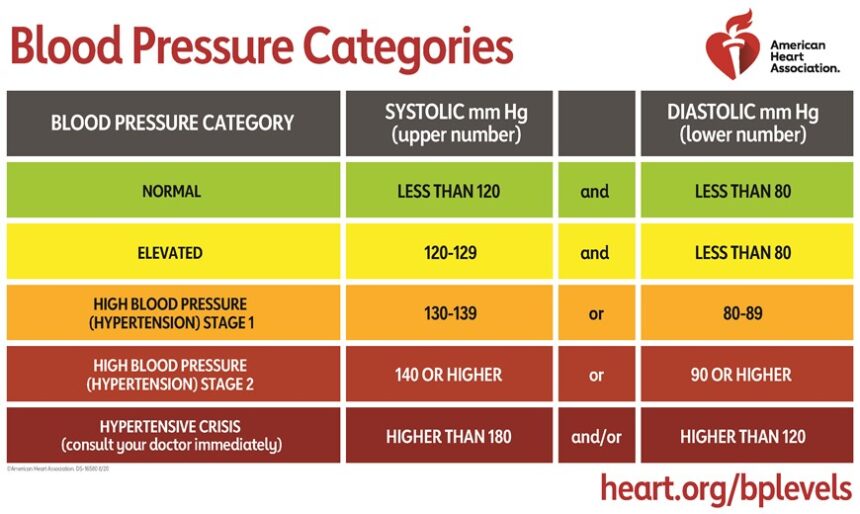 By Quinn Jacobs, PA-C, Internal Medicine, Emergency Department
By Quinn Jacobs, PA-C, Internal Medicine, Emergency Department
You may not give your blood pressure a single thought, that is until you get it checked while at the clinic. When the nurse declares your blood pressure is normal, you feel a moment of relief. For a lot of people, high blood pressure (hypertension) is a common medical concern. It means your artery walls may not hold up under the force of the blood going through them, which could lead to heart disease or other health problems.
Blood pressure (BP) isn’t just about the amount of blood your heart pumps. It also considers how the blood flows and whether plaque has built up in your arteries to impede the blood flow. For example, if your heart needs to pump blood through narrowed arteries lined with plaque, the BP reading is higher.
What do the two numbers mean?
The two numbers in a blood pressure reading measure different types of pressure in your arteries:
- Systolic pressure is the top number—the amount of pressure placed on the arteries and blood vessels when your heart beats.
- Diastolic pressure is the bottom number—the pressure in the arteries when the heart rests between beats, filling with blood and getting oxygen.
A normal BP is less than 120/80 mmHg (millimeters of mercury). Readings above 180/120 are dangerously high—seek immediate medical attention! High BP can go undetected for years, but you are at a greater risk of health problems, such as heart attack or stroke if it isn’t controlled.
Change it up to bring ’em down.
Medication isn’t always needed to control high BP if these lifestyle changes are fully implemented:
- Lose extra pounds/watch your waistline—With every 2.2 pounds lost, BP may go down by one mmHg. A man is considered at risk if his waist measures more than 40 inches; a woman’s risk starts at 35 inches.
- Exercise regularly (lowers BP by 5–8 mmHg)—About 30 minutes most days of the week can lower your blood pressure. Keep with it, or your BP could go up again.
- Eat a healthy diet (lowers BP up to 11 mmHg)—Whole grains, fruits and veggies, low-fat dairy, and less saturated fat and cholesterol. Read food labels and keep a food diary to reveal your eating habits.
- Reduce sodium (lowers BP 5–6 mmHg)—Sodium hides in the processed foods you eat. Stop adding salt and switch to herbs and salt-free seasonings. If you can’t stop salt cold turkey, slowly cut back and your tastes will adjust in a short amount of time.
- Limit the amount of alcohol you drink (lowers BP 4 mmHg)—Drinking in moderation (one drink for women and two for men) can help lower your BP.
- Stop smoking—Reduces risks of heart disease and improves your health.
- Reduce caffeine—Caffeine can raise BP up to 10 mmHg for those who don’t drink caffeinated beverages regularly.
- Reduce your stress—Take time to sit quietly and relax, take a walk, or participate in hobbies or activities you enjoy.
- Monitor your blood pressure at home—By keeping track of your BP, you’ll see evidence that your lifestyle changes are working.
- See your doctor regularly—Discuss any medication changes or other treatments.
- Get support—Let family and friends know you’re working on your blood pressure so they can help you take care of yourself—even join a support group.


